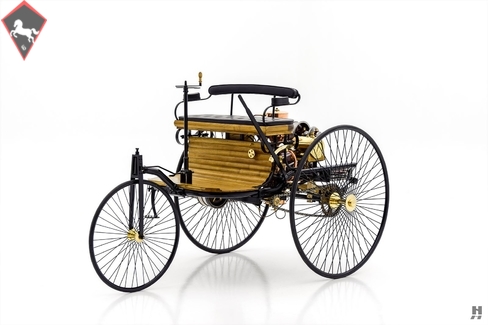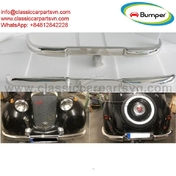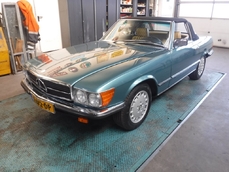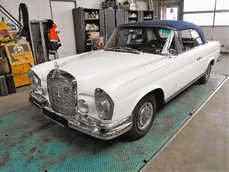Mercedes-Benz Other Wagon 1901
Allgemeine Beschreibung :
If there is one vehicle that could be considered the genesis of the modern automobile, it is Karl Benz’s revolutionary Patent Motorwagen of 1886. To truly pinpoint the first automobile may be an impossible task, but it was the Benz that made the first successful and public long-distance drive and the first to successfully reach production. It stands as one of the most significant inventions of the 19th century and is included in the United Nations Educational, Scientific and Cultural Organization (UNESCO) International Documentary Heritage Register.
Benz’s creation was true to form of similar early motorcars, in that it featured a small capacity engine in a buggy-style chassis. The Benz used a single cylinder, horizontally placed four-stroke engine of 954 cubic centimeters. Spinning at a rather low 400 rpm (Benz favored low-revving engines as he believed higher speeds would cause failures), the petrol powered engine produced about 0.75 horsepower and could move the 265kg machine along at about eight mph in ideal conditions. Power transmission was via a large flat belt, with final drive handled by a pair of robust chains driving the large spoked wheels. The engine was cooled via an evaporative water system, which meant regular stops to refill the reservoir. Engine speed was controlled via a sleeve valve below the seat and braking via hand lever connected to the belt-pulley system. The chassis rode on elliptic springs in the rear (as well as on the buggy-style seat), and a single front wheel was steered via tiller as Benz was not yet aware of the Ackermann geometry system that allowed for two steering wheels on a front axle.
Simple yet effective, the Patent Motorwagen had a rather quiet launch as Karl Benz was continually tinkering with the design before presenting it to the press and potential buyers. His business partners grew increasingly impatient, as did his wife, Bertha Benz, who had also supplied Karl with a significant source of funds for his project. Perhaps motivated to help her husband or probably out of sheer impatience for his perfectionism, Bertha took her two teenage sons in Patent Motorwagen #3 on the world’s first long-distance motoring journey – and without informing her husband. She traveled from their home in Mannheim to Pforzheim, a one-way distance of about 66 miles (106 km). Along the way, Bertha cleared a clogged fuel line with a hat pin and used her garter as insulation material on a frayed wire. When the brakes were found to be inadequate, she had a cobbler fashion some leather into the first ever brake pad. She stopped at a pharmacy in Wiesloch to purchase ligroin (a petroleum solvent) and thereby created the world’s first filling station! Her teenage sons often had to push the machine up steep inclines, but the journey was completed by dusk, with Bertha notifying Karl of her arrival in Pforzheim via telegram. She would make a successful return trip a few days later. The importance of Bertha’s drive in the Patent Motorwagen cannot be overstated – her experiences on the journey influenced the design of the production models and future Benz machines. She was, in essence, the world’s first development driver for a tiny firm that would eventually grow into one of the world’s premier vehicle manufacturers – Mercedes-Benz.
In 1986, to celebrate the machine’s 100th anniversary and to honor the achievements of Karl and Bertha Benz, Daimler-Benz commissioned a series of functional replicas of the Benz Patent-Motorwagen, which were to be sold directly through the Mercedes-Benz Classic Center in Germany. Mercedes outsourced the task of producing the model to the highly capable John Bentley and Sons Engineering in England, who used Daimler-Benz’s authentic example as a pattern to build a near-perfect, running and driving recreation. Since 1986 approximately 330 have been constructed by Mr. Bentley, and his creations are considered the most desirable and authentic.
Our featured 1886 Patent Motorwagen is a brand new build direct from John Bentley, wearing unit number MH040418. It is meticulously handcrafted using original-type materials and detailed to a very high standard. The finish work and quality of the machining are impressive; from the simple, exposed mechanicals to the finely fitted wood decking and hand-stitched black leather buggy seat. It rides on lightweight metal spoke wire wheels built on beautiful brass hubs as original (Benz felt wood was far too heavy and cumbersome). The single-cylinder engine is an exquisite display in itself; a mix of highly polished copper, brass, and deep red-painted cast iron. It is correctly detailed down to the thick leather belt that transmits power from the engine to the final drive chains. It is no mere static display, as it runs and drives in the same manner as the original.
The quality and craftsmanship are impressive throughout, and this delightful piece would be a welcome addition to virtually any collection or transportation museum. While it may appear on the surface to be little more than a full-scale collectible model; it is, in fact, a fully functioning and incredibly faithful recreation. The Benz Patent Motorwagen stands proudly as the father of the internal-combustion motorcar, and we are pleased to offer this outstanding tribute in celebration of the groundbreaking original.
https://hymanltd.com/vehicles/6202
1901 Mercedes-Benz Other Wagon is listed verkauft on ClassicDigest in St. Louis by Mark Hyman for $59500.
Fakten der Auto
Karosserietyp : Auto Marke : Mercedes-Benz Modell : Other Ausführung : Wagon Hubraum : 0.0 Modelljahr : 1901 Lage : Missouri
Verkauft
Angaben Zum Verkäufer
Verkauft
People who viewed this Mercedes-Benz Other also viewed similar Mercedes-Benz listed at ClassicDigest
Other cars listed for sale by this dealer
über Mercedes-Benz
In den Annalen der Automobilgeschichte entfaltet sich die Reise von Mercedes-Benz wie eine Erzählung voller Ingeniosität seiner Gründer. Im Jahr 1886 schuf Karl Benz den Benz Patent Motorwagen, eine Kreation, die als das weltweit erste Automobil in die Geschichte eingehen sollte. Unwissentlich markierte dieser Moment den Ursprung dessen, was sich zu einem weltweit renommierten Premium-Autohersteller entwickeln würde. Die finanzielle Basis dieses bahnbrechenden Unternehmens wurde interessanterweise von Karls Ehefrau, Bertha Benz, bereitgestellt, was eine bemerkenswerte Partnerschaft demonstrierte, die den Ton für das Erbe von Mercedes-Benz setzen sollte.Nicht weit entfernt entstand eine parallele Erzählung, als die Daimler-Motoren-Gesellschaft, gegründet von Gottlieb Daimler und Wilhelm Maybach, die Bühne betrat. Im Jahr 1901 enthüllten sie ihr Auto unter dem mittlerweile berühmten Namen "Mercedes", was auf Spanisch "Geschenk Gottes" bedeutet. Dieser Name wurde auf das Auto auf Wunsch von Emil Jellineks Tochter verliehen, dem Vertriebspartner der Daimler-Motoren-Gesellschaft. Die Räder der Innovation wurden in Bewegung gesetzt.
Springen wir vorwärts ins Jahr 1926, ein entscheidendes Jahr, das die Fusion von Daimler mit Benz & Cie. sah, was zur Geburt von Daimler-Benz führte. Die Fusion führte zur Übernahme von "Mercedes-Benz" als das renommierte Markenzeichen für ihre Automobile und verschmolz die Legenden zweier visionärer Unternehmen zu einer.
Entgegen konservativen Wahrnehmungen entfaltet sich die Geschichte von Daimler-Benz als Chronik von Branchenneuheiten. Von der Einführung des Wabenkühlers über den Schwimmervergaser bis zur bahnbrechenden Einführung von Vierradbremsen im Jahr 1924 trieb Daimler-Benz kontinuierlich die Grenzen der automobilen Innovation voran. Der Dieselantrieb des Mercedes-Benz 260 D im Jahr 1936 markierte den Beginn von Dieselmotoren in Personenkraftwagen. Der ikonische Mercedes-Benz 300SL Gullwing schrieb Geschichte als das erste Auto mit direkter Kraftstoffeinspritzung, wenn auch der winzige 2-Takt-Motor des Gutbrod Vorrang beanspruchen kann.
Sicherheitsinnovationen wurden zum Markenzeichen, mit Béla Barényis patentiertem Sicherheitszellen-Design in den "Ponton"-Modellen im Jahr 1951, das Front- und Heck-Knautschzonen umfasste. Der W116 450SEL 6.9 führte die Einführung des Antiblockiersystems (ABS) ein, eine weitere wegweisende Sicherheitsfunktion. Vom ersten serienmäßigen Airbag bis hin zu vielen weiteren Innovationen wurde das Erbe der "Ersten" weiter in das Gewebe von Daimler-Benz eingeschrieben.
Auf seiner über hundertjährigen Reise hat Mercedes-Benz nicht nur Autos produziert, sondern automobile Ikonen geschaffen. Der SSKL, 710 SSK Trossi Roadster, 770K Grosser, 540K Spezial Roadster, 300SL Gullwing, W100 600 Pullman, W111 280SE 3.5 Flachkühler, W113 230SL Pagode, W109 300 SEL 6.3 und W201 2.3-16 Cosworth sind Zeugnisse des Engagements der Marke für Ingenieurkunst.
Die donnernden Silberpfeile, oder "Silberpfeile", darunter der W 25, W 125, W154, W165 und W196, schufen ein Erbe der Dominanz auf der Rennstrecke. Diese Maschinen waren nicht nur Autos; sie waren Ausdruck von Präzision, Geschwindigkeit und einem unbezwingbaren Geist, der die Konkurrenz im Staub zurückließ.
Während Mercedes-Benz in die Zukunft schreitet, tut es dies nicht nur als Automobilhersteller, sondern als Hüter eines Erbes, als Fackelträger der Innovation und als Leuchtturm automobiler Exzellenz. Der Weg in die Zukunft wird zweifellos die Fortsetzung der Verschmelzung von modernster Technologie, zeitlosem Design und dem unerschütterlichen Engagement für die Festlegung neuer Standards in der Welt der Automobile erleben.











